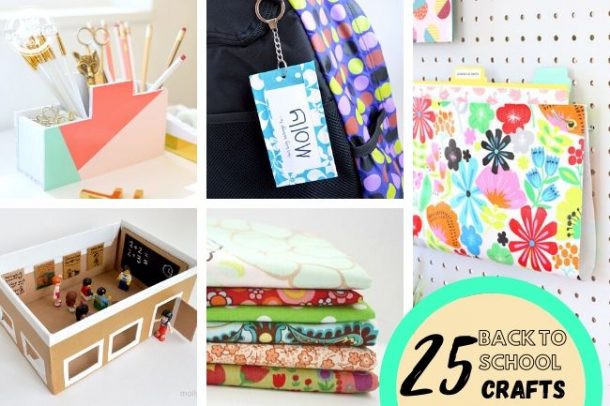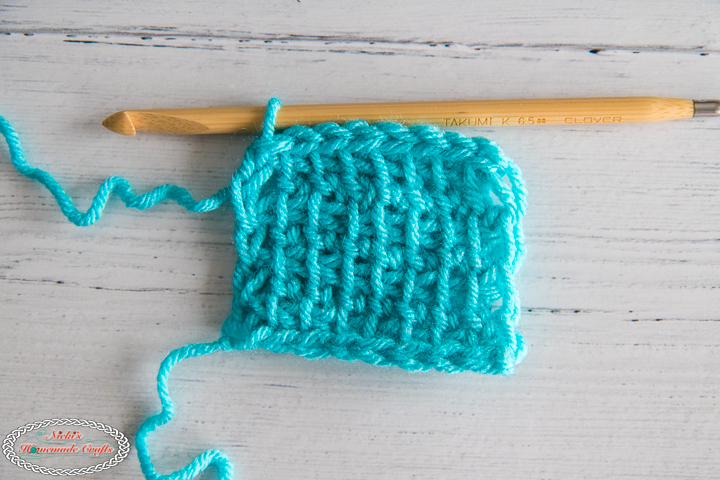
An i-cord can be knit in many ways. The number of stitches you wish to knit an i-cord will determine the technique. Maximum number of stitches allowed is five. To cast on stitches, you must pull the working yarn and create tension before each stitch. This means that the working knitting yarn should be placed in the back.
Stitch up
With a double-pointed needle and the required number of stitches, create the icord. If your i-cord is going to be longer than what you originally planned, make a temporary cast-on with the leftover yarn and join it to the Kitchener Stitch. Now, knit the working yarn across all stitches. Start with the farthest stitch from the tip.
Casting stitches is an important part in knitting an icord. It provides a firm edge to the project's base. It can also make a project’s first row look completed. Cast 3 stitches and slip them to your left needle. Then, knit the other two stitches.

Picking up stitches
The first step in knitting an icord is to place your working yarn on the right hand needle. Then, slip the working yarn through the loop on the needle as you would knit a stitch. Keep doing this until you reach the desired length of i-cord. Once the desired length is reached, finish by binding off the work normally. If the length of your i-cord is excessive, you might need to join them.
Next, insert your I-cord needle so that its point is closest to the last stitch that was cast. Make sure that the i-cord needle reaches the edge of the material. To start the icord, you can use the tail of your cast-on stitches. However, it is better to use yarn that ends at opposite end of needle.
Sewn stitches
Casting stitches for knitting an icord is very simple. This is done by transferring the last three stitches you have taken from your right-hand needle to your left. Next, you will need to knit the front and back loops for these three stitches. Now you can finish the edge of your i-cord.
Double-pointed needles are best for knitting i-cord. These allow you work the stitches quicker. Next, slip the stitches back from your right needle to the left needle.

Hide yarn tail inside i-cord
The knitter must first create a new row or stitch and insert the tip of the right needle in the stitch to hide the yarn tail. Then wrap the yarn around and pull the yarn through your work. Slide all stitches to one end of your needle. When the needle is at the right place, you can start knitting. This video shows the technique in action.
Use double-pointed knitting needles to cast the i-cord. After you have cast on the required amount of stitches, make a provisional knit with a waste yarn. Join it with a Kitchener Stitch. After the working yarn has been placed, you can knit across all stitches. Do not turn your work; bring the yarn from the stitch farthest away from the tip of the needle.
FAQ
Why do we need hobbies?
Hobbies are an integral part of our daily lives. They allow us to relax, unwind and think creatively. These hobbies offer us the opportunity to learn new skills, develop valuable lifelong interests, and provide opportunities for us to do both.
Hobbies are a way to find meaning and purpose.
These can often be a great way to get some extra time while you have nothing else.
They're also fun!
If you don't have time for a hobby, then you probably don't have time for anything else either.
So take a look at all the options available to you. If you don't have a hobby yet, then maybe you should start one today!
What are your competitive hobbies?
There are many competitive sports, including running, swimming and cycling, as well as golfing, tennis and other activities.
They're often enjoyed by people who are active and want to socialize.
If your hobby involves physical activity, you will likely find other people who share it.
You might consider joining a group or club that meets regularly to play together in sports.
You could also opt to take part in team games that involve playing alongside others.
These include football (soccer), cricket, rugby, netball, basketball, hockey, baseball, volleyball, badminton, squash, handball, and table tennis.
There are many different types of competition.
Some competitions are organized for purely recreational purposes.
Others are used to assess competitors' abilities.
Some are even designed to reward outstanding performance.
In these cases, the winners receive prizes.
Other competitions are intended to test strength and stamina.
These are called endurance events.
For example, marathon races, triathlons, Ironman Triathlon, etc.
Before participating in these events, athletes often train hard.
To prepare them mentally and physically, they will be following a strict training regimen.
They may also need to spend some time away from home during preparation.
It's important to remember that not all athletes compete in every type of event.
How do I get started?
You must decide what hobby you want before you start any new hobby.
Passion is key once you have chosen your topic.
It is essential to understand the reasons you want to start a hobby. It will give you some direction and purpose.
Once you've decided what type of hobby you'd like to pursue, you can begin planning.
Consider the equipment that you will need.
Consider whether you need to attend classes or seminars.
You must ensure you have enough room for your hobby.
It might also be worth considering joining a group or club. These groups are often supportive and offer advice.
Consider how much money you would have to spend on your hobby.
Can I make a living from my hobby and earn money?
Many hobbies can lead to making extra cash.
If your hobby is something you love, you might decide to make a living selling it.
If you are a stamp collector, you might want to start a website that sells rare stamps.
You can make extra money without the hassle of buying and selling stamps.
Another option would be to create a YouTube channel where you talk about your hobby.
This allows you to share your passion with others and potentially generate additional revenue by offering premium content.
How do I find a hobby to pursue?
When you first start your journey into finding a hobby, you may feel like you've got nothing to choose from.
You may be thinking, "I'm just not artistic" or "I hate sports," or perhaps "I don’t even know what I know."
The truth is that you likely already have a lot experience in your chosen hobby.
It's simply that you haven’t yet realized it.
Take a tour of your house. How much stuff do you own?
Do you have any old toys lying around that could be used?
Perhaps you own a collection or magazines.
You might have always wanted the ability to cook.
Or perhaps you would just like to learn how to play the guitar again.
Whatever it may be, you can likely turn it into something.
It is important to recognize that you already have a lot of experience to draw from.
Once you do that, you can choose a hobby to fit your life.
What are some good hobby ideas?
Hobby Ideas for People who Love to Learn and Teach Others.
Hobbies allow you to enjoy what you love while also learning new things.
There are many hobbies. But they all share similar characteristics. They are usually enjoyable activities that don't require a lot of effort and can be very economical.
These include working with others to teach someone how to use an instrument or build an airplane.
You may not think of yourself as a teacher but there might be something you could do in order to help someone else learn.
If you are looking to become more creative in your daily life, you might consider starting a hobby that allows you to share your talents with others.
Statistics
- I am 100% biologically a woman (discover.hubpages.com)
- This 100% accurate personality-analyzing hobby quiz discovers your passion based on your characteristics. (quizexpo.com)
- Much of this decline reflects the fact that teens are less likely to work today than in the past; among employed teens, the amount of time spent working is not much different now than it was around 2005. (pewresearch.org)
- The intensity of the dialogue partners' bond at the end of the forty-five-minute vulnerability interaction was rated as closer than the closest relationship in the lives of 30 percent of similar students. (time.com)
- The Role of the Mind in Sex, Dating, and Love: Men in the “humor” condition received phone numbers from 42.9% of the female participants and were refused 57.1% of the time. (time.com)
External Links
How To
How to Learn a Musical Instrument
There are many methods to learn music. There are many options. You can go to school, purchase a book, learn from an instructor, or watch videos online. Here are some tricks and tips to help you find your way.
-
Find something that interests your interest. If you don't like any of the instruments you see around, then you should try another one. If you don’t enjoy playing an instrument it will be hard for you to get into it.
-
Be patient. Learning anything new takes time. Do not expect to be able to master every aspect of the subject immediately. Instead, you should continue practicing every day.
-
Practice regularly. Do this even when you feel tired. This will ensure that your memory doesn't fade.
-
Pick a place where you can practice. Ideal is a quiet area where you don't have to disturb anyone else. It is important to keep the room clear of distractions. Also, don't let loud music play near your home.
-
Have fun. Music should be enjoyed. It is important to have fun when practicing. Being happy will inspire you to keep practicing.
-
Set goals. Setting goals will help you to know exactly what your goal is. Therefore, you will have no excuse for failing.
-
Keep track of your progress. Note down your successes and mistakes. You will be able to improve your skills over time by writing down all of your achievements and failures.
-
Pause. Sometimes you just need to take a break. Taking breaks can give you the time to think.
-
Ask questions. Ask for help if you are unsure or have questions about certain aspects of the instrument. They may be able help you.
-
Listening is the best way of learning. Many musicians listen to songs that they like and imitate them. This helps them understand the basic concepts behind the song.
-
Read books. You will learn more from reading books than you can by watching videos or attending classes. You will also find information in books that you won't find anywhere else.
-
You can join a band. Playing with others will force you to practice more. Plus, you'll meet people with the same interests as you.
-
Watch tutorials. Tutorials are short videos that explain various topics in great detail. These videos usually focus on one specific aspect of the instrument. These tutorials will help you to understand the more difficult parts.
-
Different methods are possible. Some people learn best by reading, while others prefer lectures. Try different methods until you find the one that works for you.
-
Practice makes perfect. It is not possible to become an expert overnight. Instead, it takes time and effort to become proficient enough for you to succeed.
-
You can learn from other musicians. Listening to others play your favorite songs can help speed up learning.